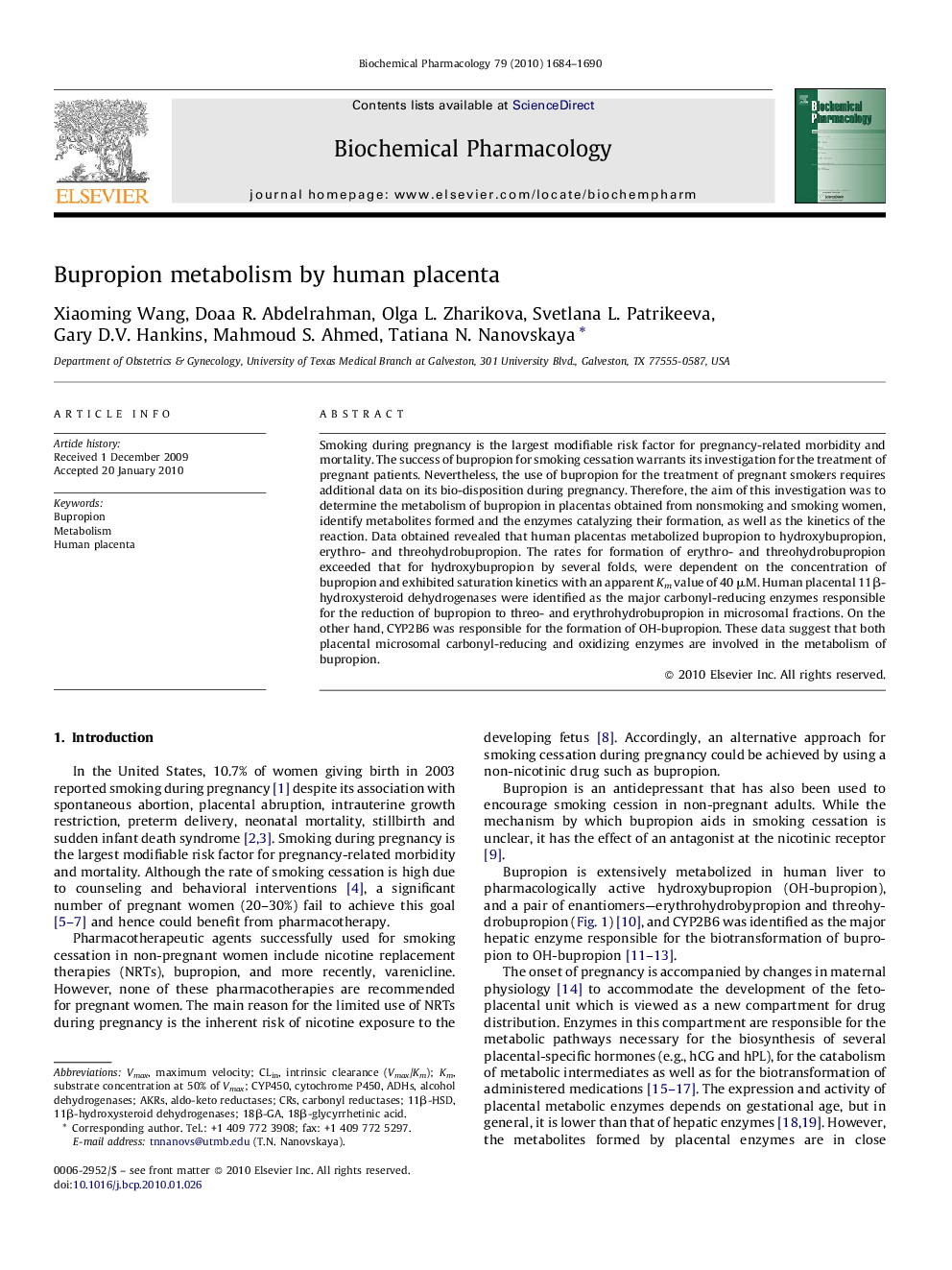| Article ID | Journal | Published Year | Pages | File Type |
|---|---|---|---|---|
| 2513334 | Biochemical Pharmacology | 2010 | 7 Pages |
Smoking during pregnancy is the largest modifiable risk factor for pregnancy-related morbidity and mortality. The success of bupropion for smoking cessation warrants its investigation for the treatment of pregnant patients. Nevertheless, the use of bupropion for the treatment of pregnant smokers requires additional data on its bio-disposition during pregnancy. Therefore, the aim of this investigation was to determine the metabolism of bupropion in placentas obtained from nonsmoking and smoking women, identify metabolites formed and the enzymes catalyzing their formation, as well as the kinetics of the reaction. Data obtained revealed that human placentas metabolized bupropion to hydroxybupropion, erythro- and threohydrobupropion. The rates for formation of erythro- and threohydrobupropion exceeded that for hydroxybupropion by several folds, were dependent on the concentration of bupropion and exhibited saturation kinetics with an apparent Km value of 40 μM. Human placental 11β-hydroxysteroid dehydrogenases were identified as the major carbonyl-reducing enzymes responsible for the reduction of bupropion to threo- and erythrohydrobupropion in microsomal fractions. On the other hand, CYP2B6 was responsible for the formation of OH-bupropion. These data suggest that both placental microsomal carbonyl-reducing and oxidizing enzymes are involved in the metabolism of bupropion.
Graphical abstractHuman placental 11β-hydroxysteroid dehydrogenases were identified as the major carbonyl-reducing enzymes responsible for reduction of bupropion to threo- and erythrohydrobupropion in microsomal fractions.Figure optionsDownload full-size imageDownload as PowerPoint slide
